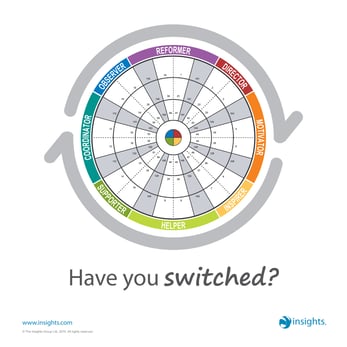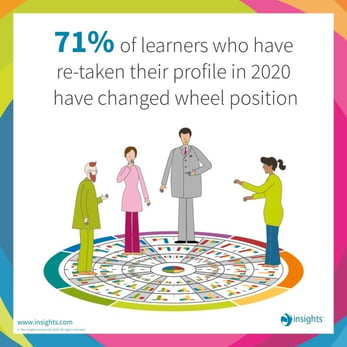We wish we should not mention it. The C-word: Corona, COVID-19, you name it, you get it. Nevertheless, the global pandemic has not only kept us isolated from other people, but it has also messed with the way we work, and this must be taken into account in the future work life.
This blog is a little preview with a chapter from our new guide to Future Work Life that we created in collaboration with our friends from Insights. Here, we will give our best (remote) reboarding tips, and the theory and tips for rediscovering yourself. So, you as an HR-Manager can equip managers to handle the reboarding challenge - and get your employees on board yet again.
Reboarding
Reboarding shares some of the same elements as onboarding. It is about getting the employees onboard - again.
Usually, reboarding happens when an employee returns from paternity leave, sick leave or is starting in another function in the same company. You get re-boarded in the company culture, your work tasks, and so on once again, and you might get new info about what happened while you were away. Reboarding is about ensuring that employees who are either starting in a new function or get back to work after a period of absence are given the optimal opportunities to perform and execute. And this is extremely relevant in our new world post-Covid-19.
Experienced Employee in a New Reality
Reboarding can be an effective tool to create more psychological safety - and letting employees know that they are appreciated in a time, where they have had so much time to reflect on their job and career. This is why it can be a very good idea to equip managers with tips and tools for a reboarding process to retain employees and keep them up to date.
First up: Knowledge, Priorities, and Responsibilities
Before going straight to the reboarding how-to’s, it is important to make these three areas clear and answer all the questions regarding each area.
Knowledge: Does the employee have the knowledge available to perform his or her tasks? Whether or not the position in the employee’s absence has changed formally or not, she needs to be updated on all that has happened. And if the employee enters an entirely new role in the company, there will almost always be a lot of silent knowledge in the team he enters, which he must have to do his job properly.
Priorities: It often happens that tasks change order - it can be because of a strategic change, the market’s development, or something else (and sometimes there is a little of it all - and that is just the reality). This is not a problem, but it is crucial that you create a direction, so the employee knows in advance which tasks are the most important and have the highest priority.
Responsibilities: Who does what? And who has the main responsibility to reboard the employee who is coming back or who is about to start in a new role? Is it the manager or is it someone else? While this may seem straightforward, it is important that you have made it clear. Otherwise, you risk ending up in a situation where you are pointing fingers at each other because there was doubt about the responsibilities. In addition, it is also nice for the employee that she knows who to go to if she has questions about her reboarding, her new work assignments, the new strategy, or something else.
Preparation and Planning
Keep track of all the hands-on stuff - make sure that the workstation - either at the office or at home - is ready with relevant things like computer, phone and so on. Also, remember all the little details that can make a workday either very easy or rather difficult; keys, passwords, relevant software, and the like. Everyone can spare some time if you take care of it before the employee sits in his chair with nothing to do, and it sends a good signal that you take him seriously.
Give the Employee A (Remote) Buddy
As we mentioned in the Onboarding process [design: reference til onboarding kapitlet], we recommend that you give the new employee a social buddy and a professional buddy.
Tips for Remote or Digital Reboarding
Create a digital reboarding path for your employees when they get back - whether it is in the home office or at the workplace, including, for example:
- Video-greeting from CEO
- Former digital pre - and onboarding paths
- Do’s and don’ts in the office
- Videos illustrating do’s and don’ts, for example how to greet each other
- Content about what has happened in the company
- Content about any new features, processes, strategies, etc.
- Be creative and use videos, sound bites, gamified elements, etc.
Send the digital reboarding module no later than a week before the job start. Afterward, the manager can consider advising the employee to go through one or more of the tests and learning modules again. Some people like to have the opportunity to revisit or dig deeper into a topic that they either find difficult or find particularly exciting. Have an open dialogue about what topics could be interesting to explore - both for the employee to get fully up to speed, but also for her further development in the company.
Rediscover Yourself Post Covid-19
Insight’s research shows that 71% of Insights learners who have retaken their personal Insights Discovery profile since March 2020 have changed wheel position, compared to 43% previously. This indicates that many of us might have changed during Covid-19.


The Insights language about ‘changing wheel position’ means you have changed your unique ‘colour mix’ of the four-color energies: Cool Blue, Fiery Red, Sunshine Yellow, and Earth Green which affects where you sit within each of the 72 segments on the Insights Discovery wheel.
If you switch wheel position, it means you’ll have shifted preferences, for instance on how you prefer to be communicated with, your strengths, how your ‘ideal work environment’ looks like, your personal motivation and leadership style, and other parts which are described in your Insights Discovery Personal Profile.
By understanding the impact of change, you can help guide your employees through their own journey of Rediscovery. Re-discovering who you are post Covid-19 is a very important part of returning to work and to build a more resilient workforce with an ability to recover faster from challenges and cope with the ever-changing circumstances that surround us, which the current pandemic is an obvious example of.
“We’re all most resilient when we do the stuff that we’re good at, when we can lean into our strengths and utilize our personal communication style.” - Tony Denton, Client Practitioner Experience Manager at Insights.
Read more in the blog post: Building resilience through tough times, using the language of color.
Re-taking personal profiles as a part of your reboarding program for teams:
1) Increased self-awareness by the individual team member making them more resilient
2) Re-connecting and re-motivating your teams with a Rediscovery session
2) Help you as an HR Manager understand what your team needs from you now

